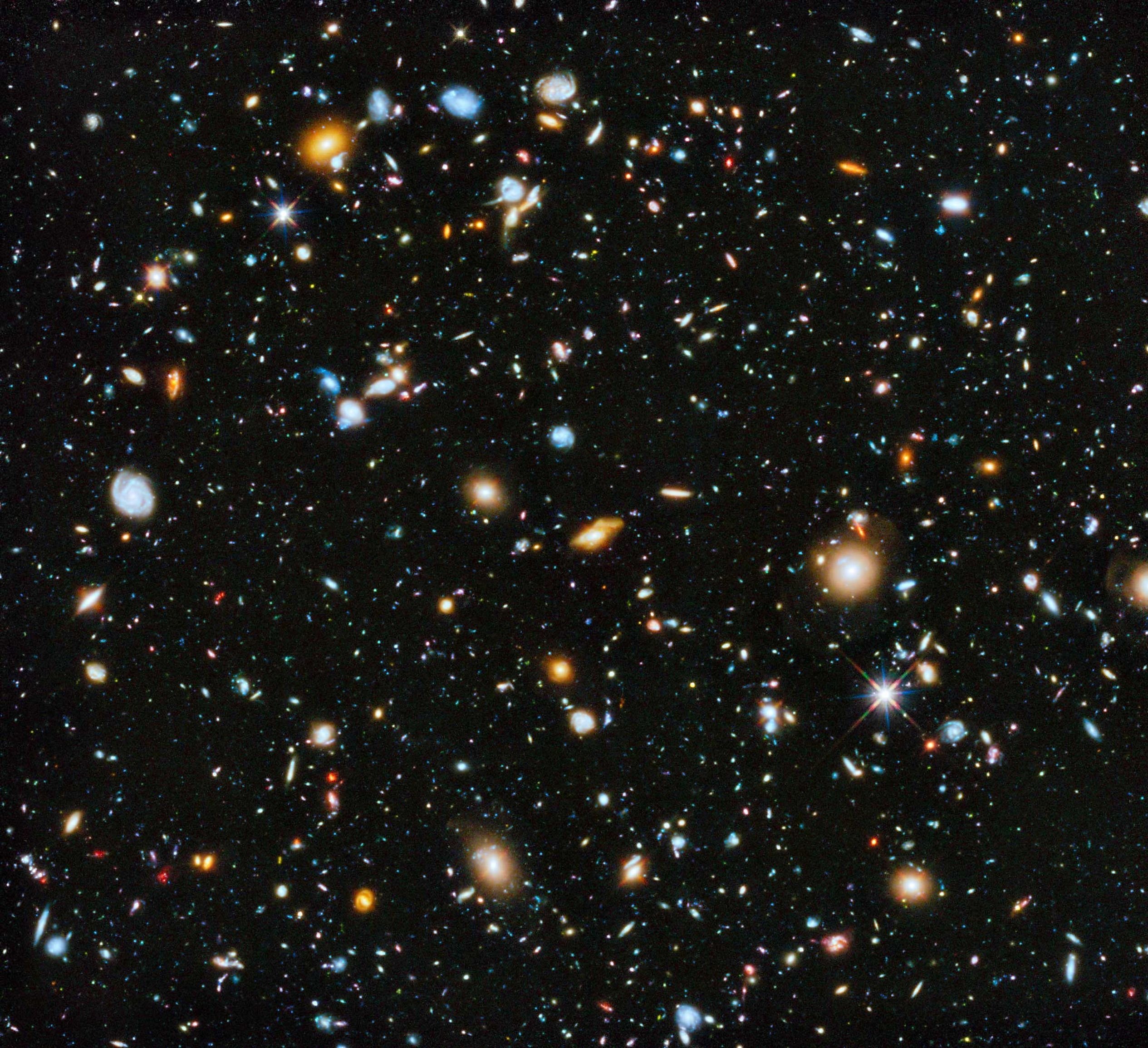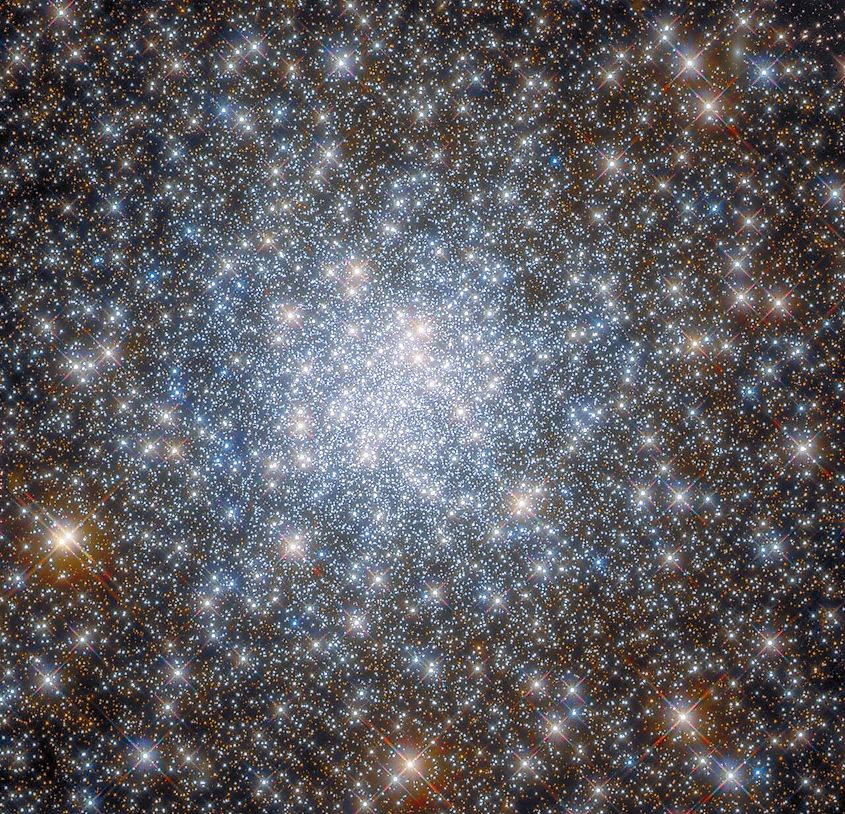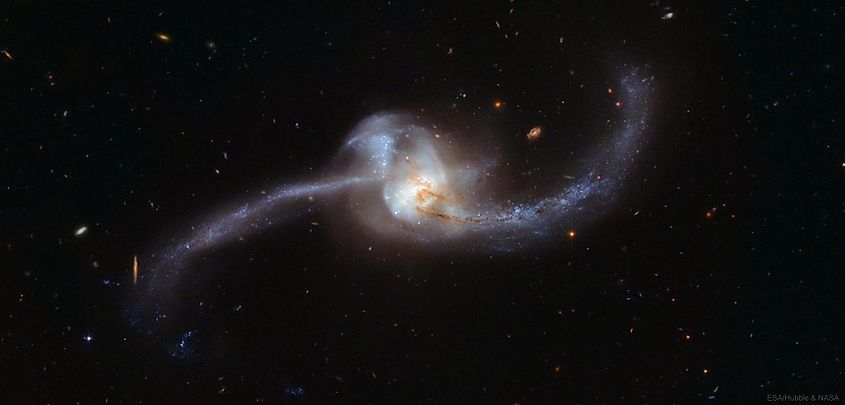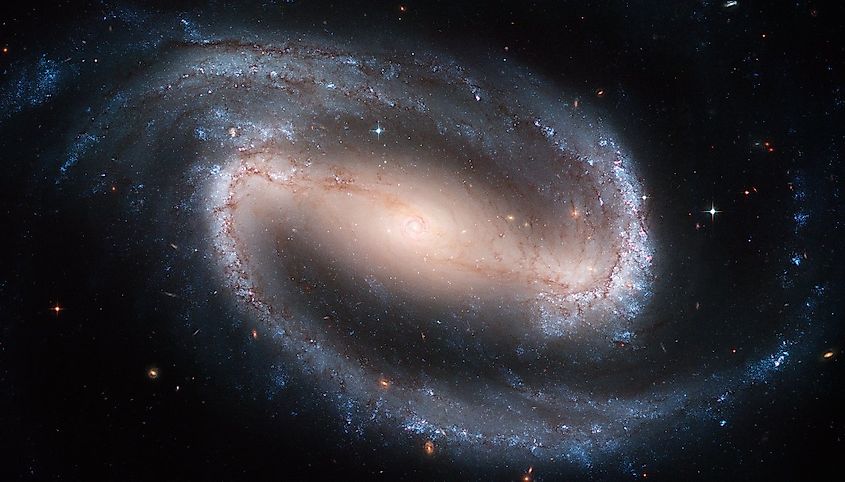
How Did The First Galaxies Form?
The universe contains an estimated one-hundred billion individual galaxies. Most of the stars and planets in the universe exist within these galaxies, and so without galaxies, the universe we inhabit would not exist. Galaxies come in a wide variety of shapes and sizes. Some are spiral, while some are elliptical. Like snowflakes, every galaxy is unique in its own way. Where did these giant collections of stars come from and how did they form?
The First Stars

The first stars to form in the universe were nothing like our sun. They were gigantic, massive blue stars that emitted high amounts of energy. All the matter in the early universe was primarily in the form of hydrogen and helium. It is unlikely that the first stars had any planets, as heavier elements are needed to form worlds, and nothing heavier than lithium existed yet. However, it would not be long until these early stars exhausted their hydrogen supply and dispersed their newly fused heavy elements into space. Within every star, hydrogen is actively being fused to form helium. This process, called nuclear fusion, is rather simple. First, you have hydrogen nuclei made up of a single proton. Given high enough temperatures and pressures, these protons will be fused together to form deuterium. Upon fusing together, one proton will quickly decay into a neutron, with the atomic nuclei now being composed of one proton and one neutron.
Next, two deuteriums may fuse to form a single helium nucleus containing two protons and two neutrons. The formation of helium releases a tremendous amount of energy that flows outwards and powers the star, while also placing the star in a state of equilibrium. The inward force of the star’s gravity is counteracted by the energy of nuclear fusion in the star’s core. Many stars will continue down the periodic table and form different elements through a process known as the Triple Alpha Process. Once we have helium nuclei, two can fuse and form a beryllium nuclei composed of four protons and four neutrons. Now a beryllium nuclei can fuse with a helium nuclei to give us the element that forms the basis for all life on Earth: carbon. During every step of this process, we also have a series of byproducts that come in the form of tiny particles, the most notable of which is the photon, which becomes the star's light.
The first stars would have been enormous, unlike anything we’re familiar with in the universe today. These early stars would have also had immense gravitational fields, allowing them to pull on one another through their mutual gravity. Inevitably, this gave rise to the first clusters of stars. Star clusters have an even stronger gravitational pull than just individual stars, and so they too will attract each other and begin the formation of the first galaxies. However, there is another way that galaxies may have formed. Rather than individual stars coming together through gravity, vast numbers of stars may have formed simultaneously to form the first small galaxies. Today, we are familiar with many different types of galaxies, from spirals to ellipticals. However, the first galaxies would not have looked like many of the galaxies we can see today, as it takes many millions to billions of years for their complex shapes to form. Instead, the first galaxies would have looked like giant blobs of stars, not unlike some small irregular galaxies we can see today. Furthermore, most galaxies would have been relatively tiny, generally containing a few million stars or less. However, the early universe was also home to a much larger number of galaxies. Because the early universe was smaller than it is now, galaxies were much closer together. For the small galaxies to eventually evolve into the gigantic ones of today, many of them would need to collide.
Colliding Galaxies

Even small galaxies have a strong gravitational pull, especially when compared to just stars or star clusters. As a result, galaxies attracted one another through their mutual gravity. Eventually, many of them began to collide and merge, increasing their relative sizes. During a typical galactic collision, stars don’t actually collide with one another. Although it has and does happen, the space between individual stars is simply too vast for them to collide in large amounts. Thus, perhaps a better description of these events is not as a collision but rather as a merger. Galaxies may pass through each other multiple times in a gravitational dance that takes millions of years to unfold. Eventually, they begin to merge. During the merging process, stars won’t generally collide, but stellar nurseries (called nebulae) can, especially given that they are much larger than the stars they create and contain. As this occurs, more hydrogen will clump together to form a new generation of stars. The rate of star formation within merging galaxies will be very high, and by the end, the galaxy will have added millions of new stars and may even exhaust most of its star-forming material. Most of the galaxies we can see, including the Milky Way, have likely merged with many other galaxies in the past. Gravity and star clusters merging is how the first galaxies came into being.
How Galaxy Shapes Formed

Galaxies are classified into four types: spiral, elliptical, irregular, and peculiar. Spiral galaxies are perhaps the most recognizable due to the fact that the Milky Way is classified as a spiral galaxy. Spirals have proven to be the most difficult galactic shapes to explain as they are the most complex. Their shape is believed to be the result of density waves caused by star-formation, along with gravity and the velocity of spiral arms. Interestingly, the stars, gas, and dust contained within the spiral arms of a galaxy actually move slower than the arm itself due to their higher density. This difference in density causes the arms to wind and become spirals. In order for the spiral arms to sustain themselves, density waves from star-formation, along with the gravitational pull of stars, holds the arms together and keeps them from winding up. The other types of galaxies form in much simpler ways. Ellipticals are believed to be the end-result of galactic collisions, while irregular and peculiar galaxies are the result of galaxies that have passed near each other, distorting their shape, or they are galaxies currently undergoing the process of merging together.











